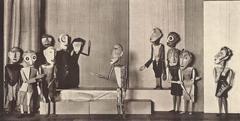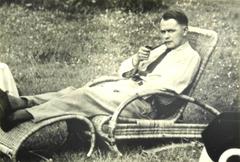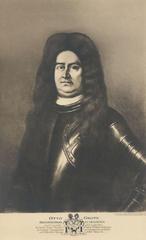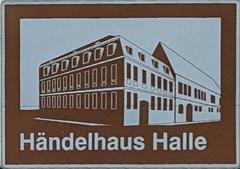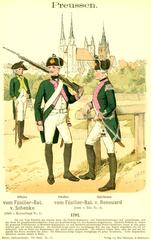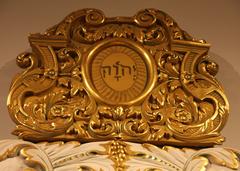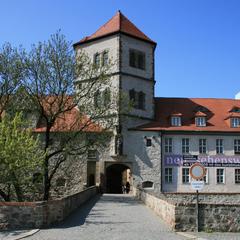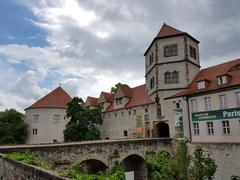Stadtgottesacker Halle, Germany: Comprehensive Visiting Guide, History, and Restoration Insights
Date: 15/06/2025
Introduction
Nestled in the heart of Halle (Saale), Germany, the Stadtgottesacker is a striking testament to Renaissance funerary architecture and the city’s rich cultural heritage. Constructed between 1557 and 1594 under the direction of Nickel Hoffmann, this Protestant cemetery is one of the rare Renaissance burial sites north of the Alps to preserve its original arcade-lined layout. Modeled after the Italian Camposanto tradition, it offers a unique glimpse into 16th-century burial customs, architectural innovation, and civic history. With its prominent sandstone arcades (Schwibbögen), intricate ornamentation, and tranquil, cloistered atmosphere, the Stadtgottesacker is a must-see for architecture enthusiasts, historians, and curious travelers alike. This guide provides detailed information on its architecture, visiting hours, ticketing, accessibility, restoration, and insider tips for making the most of your visit (Denkmalschutz.de; Halle-Lese; Bauhütte Stadtgottesacker; Halle Tourist Information).
Table of Contents
- Introduction
- Renaissance Design and Layout
- The Arcades (Schwibbögen): Structure and Ornamentation
- Materials and Construction Techniques
- Interior Features and Spatial Experience
- Visiting Hours and Ticket Information
- Accessibility
- Guided Tours and Special Events
- Nearby Attractions and Travel Tips
- Restoration and Preservation Efforts
- Notable Architectural Comparisons
- Integration with Halle’s Urban Fabric
- Frequently Asked Questions (FAQ)
- Summary and Visitor Tips
- References
Renaissance Design and Layout
The Stadtgottesacker is a singular example of Renaissance cemetery design in Central Europe. Inspired by the Camposanto Monumentale in Pisa, the cemetery features a slightly irregular quadrangle enclosed by robust walls and 94 arcaded burial vaults. Designed by Nickel Hoffmann, the layout creates a cloister-like space that invites both contemplation and commemoration. The high walls with bastion-like features and a prominent gatehouse signal a transition from the bustling city to a tranquil space of remembrance (Wikipedia; Denkmalschutz.de; Halle-Lese).
The Arcades (Schwibbögen): Structure and Ornamentation
The arcades are the cemetery’s defining architectural feature: 94 sandstone arches forming a continuous gallery around the perimeter. Each arcade serves as a family burial vault, adorned with Renaissance and early Baroque ornamentation. Facades are decorated with reliefs, biblical inscriptions, coats of arms, and intricate motifs such as vines and putti. The variation in style across the arcades reflects the three-decade construction period, offering a veritable “pattern book” of artistic trends from the late 16th to early 17th centuries (Denkmalschutz.de; De Gruyter Brill; Halle-Lese).
Many arcades retain their original wrought-iron or wooden gates, while others display contemporary reliefs as part of ongoing restoration and artistic integration.
Materials and Construction Techniques
Locally quarried sandstone was used for the arcades, valued for its durability and capacity for detailed carving. The enclosing walls are brick with a plaster finish. The segmental arches—a Renaissance hallmark—required robust engineering to support the continuous pitched roof and the deep burial niches behind each arcade (Denkmalschutz.de).
Interior Features and Spatial Experience
The arcades provide sheltered walkways around a serene central courtyard, now landscaped with mature trees and springtime carpets of Siberian squill. The interplay of light and shadow beneath the arches, coupled with ivy-clad tombs and sculpted gravestones—including those in classical and Jugendstil styles—creates a contemplative and romantic atmosphere (Halle-Lese).
Visiting Hours and Ticket Information
- Opening Hours: Daily, generally from 9:00 AM to 6:00 PM (longer in summer; check official sources for updates).
- Entry: Free for all visitors. Donations are appreciated to support ongoing restoration (Halle Tourist Information; MDR Kultur).
- Guided Tours: Available in German and English; group tours can be booked in advance (Museumsnetzwerk Halle).
Accessibility
The cemetery features smooth, wheelchair-accessible pathways and barrier-free entry points. Some uneven surfaces remain, so visitors with mobility challenges are encouraged to contact the Bauhütte Stadtgottesacker e.V. ahead of time for additional assistance (Halle Tourist Information).
Guided Tours and Special Events
Regular guided tours provide expert insights into the site’s architecture, history, and notable burials. Special events—including art exhibitions, historical commemorations, and seasonal festivals—enrich the visitor experience. Schedules are published via the Bauhütte association and Halle’s tourist office (Museumsnetzwerk Halle).
Nearby Attractions and Travel Tips
Located close to Halle’s city center and Hansering, Stadtgottesacker is easily reached via public transport, bicycle, or on foot. Limited parking is available nearby. While in the area, consider visiting:
- Marktkirche (Market Church)
- Francke Foundations
- Händel House Museum
- Halle’s historic Old Town
Photography is allowed but visitors are asked to be mindful of the site’s solemn nature (The Crazy Tourist).
Restoration and Preservation Efforts
After suffering extensive damage during World War II and neglect during the DDR era, only two-thirds of the original arcades survived until reunification. Volunteer efforts in the 1980s stabilized the remaining structure. In 1990, the Bauhütte Stadtgottesacker e.V. was founded to lead a comprehensive restoration—preserving original elements, reconstructing destroyed arcades based on historical research, and integrating new artistic reliefs by contemporary sculptors. The project received national recognition, including the “Silberne Halbkugel” award (2018), Germany’s highest honor for monument conservation (Bauhütte Stadtgottesacker; Mitteldeutsche Zeitung).
Notable Architectural Comparisons
Stadtgottesacker’s arcade-enclosed design is unique in scale and preservation north of the Alps. Its inspiration from Italian Camposanto cemeteries is evident, yet it has been adapted to local Protestant traditions. Comparable sites include Dresden’s Johannisfriedhof, though Stadtgottesacker remains more cohesive and architecturally unified (The Crazy Tourist).
Integration with Halle’s Urban Fabric
Despite its peaceful, secluded atmosphere, the cemetery is centrally located, with its imposing walls and gatehouse forming a clear boundary between the city and a contemplative sanctuary. Architectural motifs echo those of other prominent Halle landmarks, emphasizing its role in the city’s cultural identity (Halle-im-Bild).
Frequently Asked Questions (FAQ)
Q: What are the visiting hours?
A: Typically, 9:00 AM to 6:00 PM daily, with longer hours in summer. Check the official website for updates.
Q: Is there an entrance fee?
A: Entry is free; donations help support restoration.
Q: Are guided tours available?
A: Yes, in German and English. Book via Museumsnetzwerk Halle or Halle Tourist Information.
Q: Is the site wheelchair-accessible?
A: Yes, with paved paths and ramps.
Q: How do I get there?
A: Close to city center; accessible by tram, bus, bike, or on foot. Parking is limited.
Q: Can I take photographs?
A: Yes, but please be respectful.
Q: What else can I see nearby?
A: Marktkirche, Francke Foundations, Händel House, and Halle’s Old Town.
Summary and Visitor Tips
Stadtgottesacker is a harmonious blend of Renaissance architecture, Protestant heritage, and community-driven preservation. Its distinctive arcades, symbolic layout, and integration of contemporary art offer a unique narrative spanning centuries. Thanks to the dedication of the Bauhütte Stadtgottesacker e.V. and local supporters, visitors today can enjoy barrier-free access, insightful tours, and a tranquil atmosphere. Enhance your visit by exploring the cemetery alongside other Halle landmarks and using digital resources such as virtual tours and the Audiala audio guide app. Supporting the site through donations helps preserve this exceptional monument for future generations (Bauhütte Stadtgottesacker; Halle Tourist Information; Denkmalschutz.de).
References
- Denkmalschutz.de: Stadtgottesacker in Halle – Renaissance funerary architecture and restoration
- Halle-Lese: Stadtgottesacker Halle overview and visitor information
- Bauhütte Stadtgottesacker e.V.: Restoration and preservation details
- Halle Tourist Information: Visiting hours and tours
- Wikipedia: Stadtgottesacker
- Museumsnetzwerk Halle: Guided tours information
- The Crazy Tourist: Architectural comparisons and visitor tips
- Verliebt in Halle: Visitor experience and restoration updates
- MDR Kultur: Cultural and visiting insights
- OAPEN Open Access Book: Reformation-era burial practices and Stadtgottesacker
- Archivalia Hypotheses: Historical and architectural analysis
- Mitteldeutsche Zeitung: Restoration history and community efforts
- Halle-entdecken.de: Visitor information and historical context
- De Gruyter Brill: Art historical analysis
- Halle-im-Bild: Urban context
- Komoot: Visitor highlights
- 360-degree virtual tour
